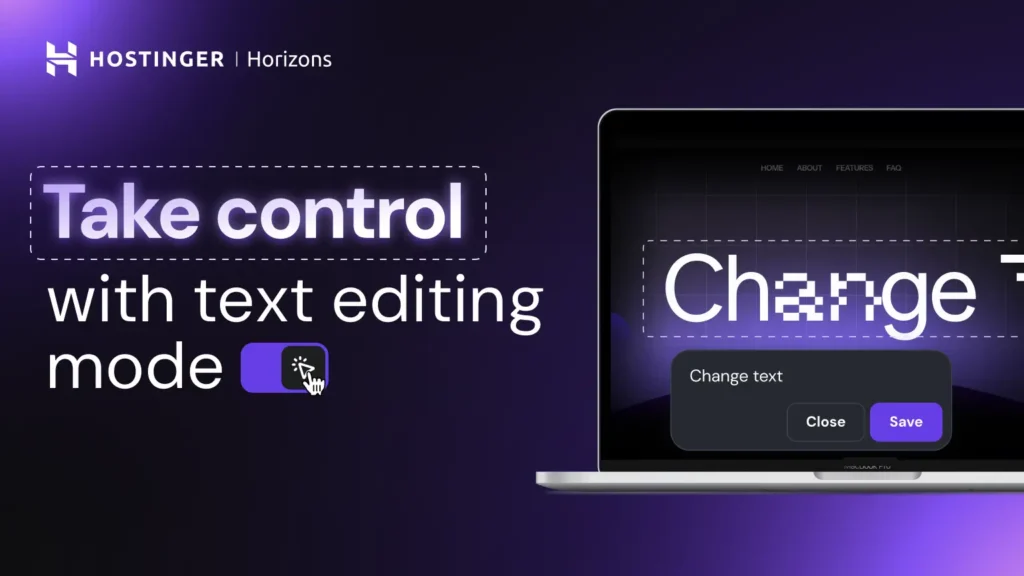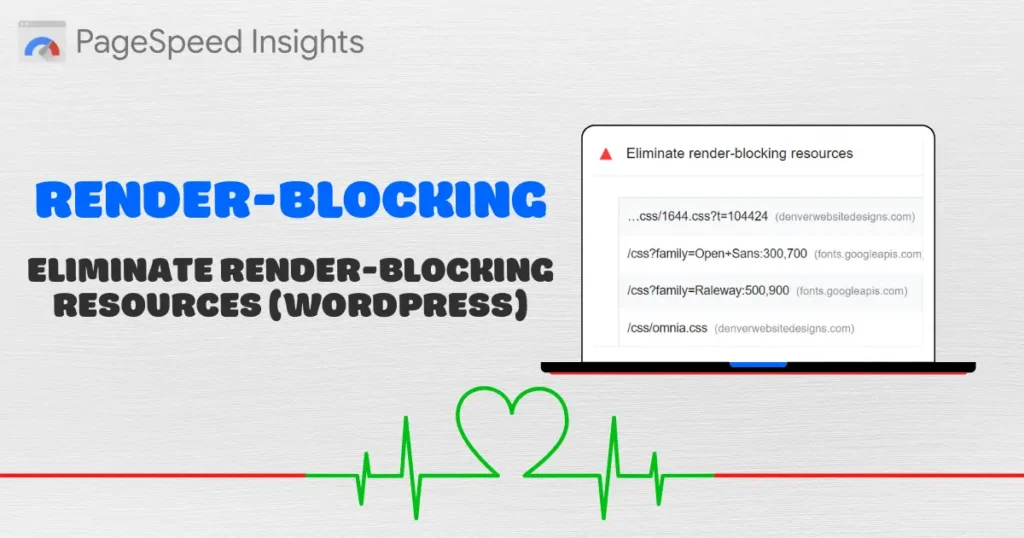Bạn có biết rằng 58.99% lưu lượng truy cập website toàn cầu hiện tại đến từ thiết bị di động? Trong thời đại mà người dùng truy cập internet từ hàng chục loại thiết bị khác nhau – từ smartphone, tablet đến desktop với vô số kích thước màn hình – việc tạo ra trải nghiệm web nhất quán trở thành thách thức lớn nhất của các nhà phát triển web. Responsive web design đã xuất hiện như một giải pháp cách mạng, cho phép website tự động điều chỉnh giao diện để phù hợp với mọi thiết bị. Không chỉ đơn thuần là xu hướng, responsive design đã trở thành tiêu chuẩn bắt buộc khi Google chính thức áp dụng Mobile-First Indexing từ năm 2021. Bài viết này sẽ giúp bạn hiểu sâu về responsive web design, từ khái niệm cơ bản đến các kỹ thuật triển khai nâng cao, cùng với những case study thực tế và xu hướng mới nhất năm 2025.
Responsive Web Design Là Gì? Định Nghĩa Và Khái Niệm Cơ Bản
Responsive web design (thiết kế web đáp ứng) là phương pháp thiết kế và phát triển website cho phép giao diện tự động thích ứng và hiển thị tối ưu trên mọi thiết bị và kích thước màn hình. Thay vì tạo ra nhiều phiên bản website riêng biệt cho desktop, tablet và mobile, responsive design sử dụng một codebase duy nhất với khả năng linh hoạt điều chỉnh layout, hình ảnh và nội dung.
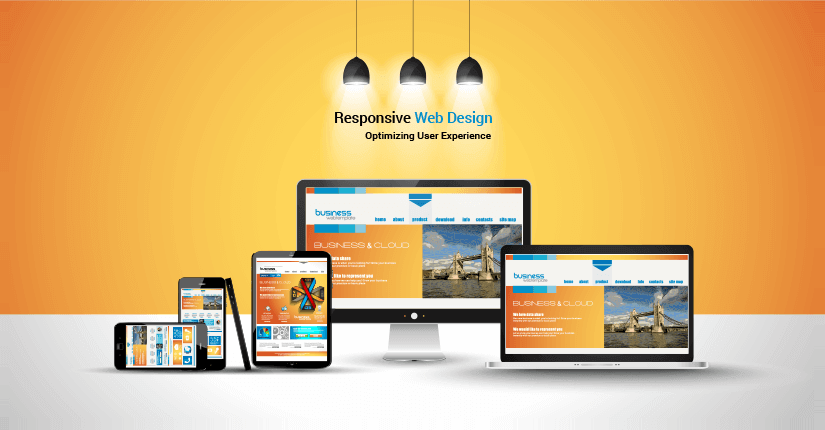
Nguyên lý cốt lõi của Responsive Web Design:
1. Fluid Grid System (Hệ thống lưới linh hoạt)
- Sử dụng đơn vị tương đối (%, em, rem) thay vì pixel cố định
- Layout chia theo tỷ lệ phần trăm, tự động co giãn theo màn hình
- Grid system 12 cột là tiêu chuẩn phổ biến nhất
2. Flexible Images (Hình ảnh linh hoạt)
- Hình ảnh tự động scale theo container
- Sử dụng CSS:
max-width: 100%; height: auto; - Responsive images với thuộc tính
srcsetvàsizes
3. Media Queries (Truy vấn phương tiện)
- CSS rules áp dụng cho từng breakpoint cụ thể
- Điều chỉnh style dựa trên kích thước màn hình, độ phân giải
- Hỗ trợ orientation (portrait/landscape)
Lịch sử phát triển:
Khái niệm responsive web design được Ethan Marcotte đưa ra lần đầu tiên trong bài viết “Responsive Web Design” trên A List Apart vào tháng 5/2010. Trước đó, các developer thường tạo ra nhiều phiên bản website riêng biệt (m.website.com cho mobile), gây ra nhiều vấn đề về maintenance và user experience.
Tại Sao Responsive Web Design Lại Quan Trọng Trong Thời Đại Số?
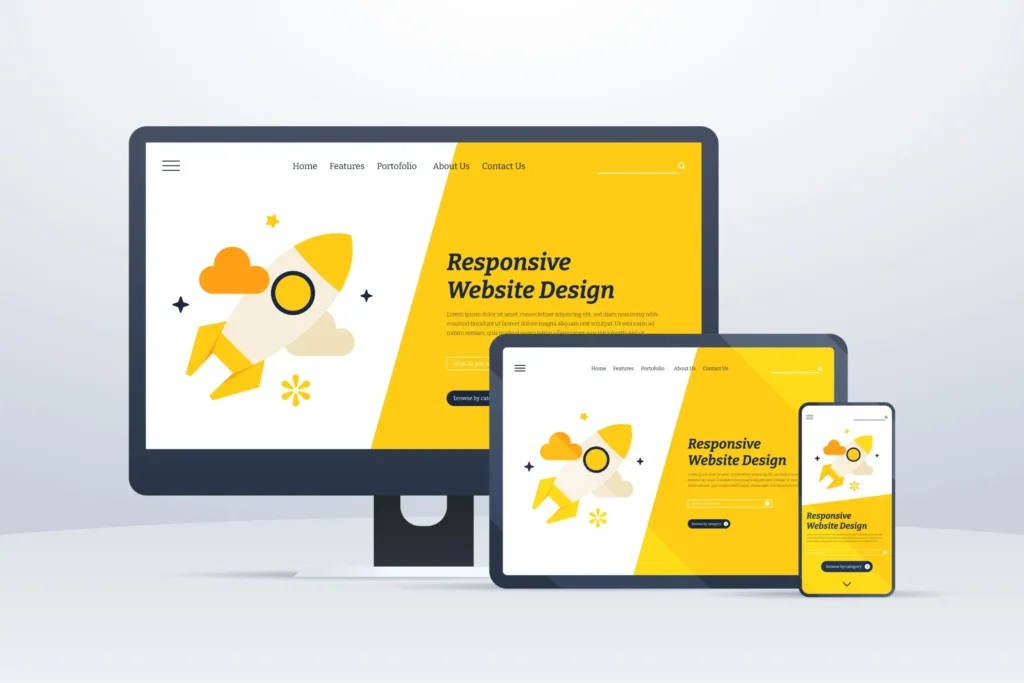
1. Thống Kê Sử Dụng Thiết Bị Di Động Đáng Kinh Ngạc
Theo báo cáo Statista 2025, việc sử dụng thiết bị di động để truy cập internet đã có những thay đổi đáng kể:
- Mobile traffic: 58.99% tổng lưu lượng web toàn cầu
- Desktop traffic: 39.35%
- Tablet traffic: 1.66%
- Tốc độ tăng trưởng: Mobile traffic tăng 15.2% so với năm 2024
Tại Việt Nam, con số này còn ấn tượng hơn với 65.8% người dùng truy cập web chủ yếu từ smartphone.
2. Tác Động Trực Tiếp Đến SEO và Ranking
Mobile-First Indexing của Google:
- Từ tháng 3/2021, Google chính thức sử dụng phiên bản mobile để đánh giá và xếp hạng website
- Website không responsive sẽ bị penalty nghiêm trọng trong kết quả tìm kiếm
- Core Web Vitals đánh giá mạnh về trải nghiệm mobile
Page Experience Signals:
- Largest Contentful Paint (LCP): Tốc độ tải nội dung chính
- First Input Delay (FID): Thời gian phản hồi tương tác đầu tiên
- Cumulative Layout Shift (CLS): Độ ổn định layout khi tải trang
3. Tác Động Đến Conversion Rate và Doanh Thu
Nghiên cứu từ Google cho thấy:
- 53% người dùng rời bỏ website nếu thời gian tải > 3 giây trên mobile
- Website responsive có conversion rate cao hơn 67% so với non-responsive
- Bounce rate giảm trung bình 35% khi áp dụng responsive design
- Thời gian session tăng 78% trên các website responsive tốt
4. Chi Phí Phát Triển và Bảo Trì Tối Ưu
So sánh chi phí:
- Separate mobile site: 150-300% chi phí phát triển và maintenance
- Responsive design: 100% chi phí ban đầu, 60% chi phí maintenance
- ROI: Responsive design có ROI cao hơn 40-60% trong dài hạn
Các Thành Phần Cốt Lõi Của Responsive Web Design
1. Breakpoints – Điểm Chuyển Đổi Quan Trọng
Breakpoints là những điểm kích thước màn hình mà tại đó layout sẽ thay đổi để phù hợp với thiết bị. Việc chọn breakpoints phù hợp là yếu tố quyết định thành công của responsive design.
Breakpoints chuẩn 2025:
/* Extra Small devices (phones) */
@media (max-width: 575.98px) { ... }
/* Small devices (landscape phones) */
@media (min-width: 576px) and (max-width: 767.98px) { ... }
/* Medium devices (tablets) */
@media (min-width: 768px) and (max-width: 991.98px) { ... }
/* Large devices (desktops) */
@media (min-width: 992px) and (max-width: 1199.98px) { ... }
/* Extra large devices (large desktops) */
@media (min-width: 1200px) { ... }2. Flexible Grid Systems
Grid system là xương sống của responsive layout, cho phép chia nội dung thành các cột linh hoạt.
CSS Grid (Modern approach):
.container {
display: grid;
grid-template-columns: repeat(auto-fit, minmax(300px, 1fr));
gap: 20px;
}Flexbox (Flexible approach):
.flex-container {
display: flex;
flex-wrap: wrap;
justify-content: space-between;
}
.flex-item {
flex: 1 1 300px; /* grow, shrink, basis */
}3. Responsive Images và Media
Responsive Images với srcset:
<img src="image-400.jpg"
srcset="image-400.jpg 400w,
image-800.jpg 800w,
image-1200.jpg 1200w"
sizes="(max-width: 600px) 400px,
(max-width: 1000px) 800px,
1200px"
alt="Responsive image example">CSS cho Responsive Videos:
.video-container {
position: relative;
padding-bottom: 56.25%; /* 16:9 aspect ratio */
height: 0;
overflow: hidden;
}
.video-container iframe {
position: absolute;
top: 0;
left: 0;
width: 100%;
height: 100%;
}Kỹ Thuật Triển Khai Responsive Design Nâng Cao
1. Mobile-First Approach – Phương Pháp Ưu Tiên Mobile
Mobile-first là chiến lược thiết kế bắt đầu từ màn hình nhỏ nhất, sau đó mở rộng lên các thiết bị lớn hơn. Đây là best practice được Google khuyến nghị.
Ưu điểm của Mobile-First:
- Performance tốt hơn trên mobile (ưu tiên content quan trọng)
- Progressive enhancement thay vì graceful degradation
- Phù hợp với Mobile-First Indexing của Google
- UX tốt hơn do tập trung vào core functionality
Cách triển khai:
/* Base styles cho mobile */
.header {
padding: 10px;
font-size: 16px;
}
/* Tablet và lớn hơn */
@media (min-width: 768px) {
.header {
padding: 20px;
font-size: 18px;
}
}
/* Desktop */
@media (min-width: 1024px) {
.header {
padding: 30px;
font-size: 20px;
}
}2. Container Queries – Tương Lai Của Responsive Design
Container Queries cho phép responsive dựa trên kích thước của container thay vì viewport, mở ra khả năng tạo ra các component thực sự responsive.
.card-container {
container-type: inline-size;
}
@container (min-width: 400px) {
.card {
display: flex;
flex-direction: row;
}
}
@container (max-width: 399px) {
.card {
display: block;
}
}3. Intrinsic Web Design – Thiết Kế Web Nội Tại
Jen Simmons đã đưa ra khái niệm Intrinsic Web Design, kết hợp các công nghệ CSS hiện đại:
- CSS Grid cho layout 2D phức tạp
- Flexbox cho alignment và distribution
- CSS Shapes cho typography sáng tạo
- Aspect Ratio cho responsive media
- CSS Clamp() cho responsive typography
/* Responsive typography với clamp */
h1 {
font-size: clamp(1.5rem, 4vw, 3rem);
}
/* Aspect ratio cho responsive containers */
.hero-image {
aspect-ratio: 16 / 9;
object-fit: cover;
}Công Cụ Và Framework Hỗ Trợ Responsive Design
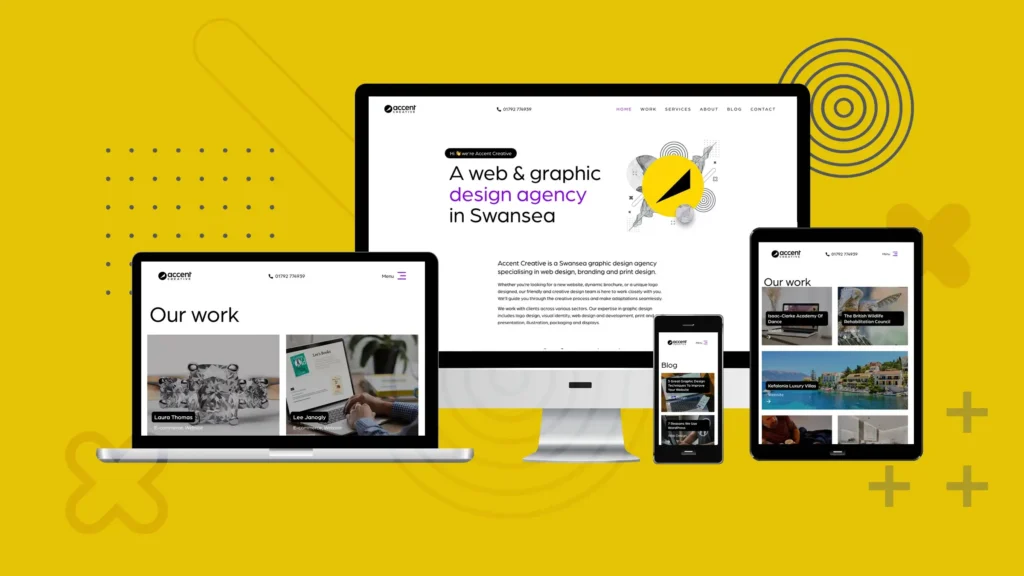
1. CSS Frameworks Phổ Biến
Bootstrap 5.3 (2025)
- Grid system 12 cột với CSS Grid và Flexbox
- Utility-first classes
- Customizable breakpoints
- Built-in responsive components
Tailwind CSS 3.4
- Utility-first approach
- Responsive modifiers (sm:, md:, lg:, xl:, 2xl:)
- Custom breakpoints dễ dàng
- Smaller bundle size với JIT compiler
Foundation 6
- Mobile-first framework
- Flexible grid system
- Accessibility-focused
- Modular architecture
2. Development Tools
Browser DevTools:
- Device simulation với preset devices
- Network throttling để test performance
- Responsive design mode
- CSS Grid và Flexbox debugging
Online Testing Tools:
- BrowserStack: Test trên real devices
- Responsinator: Quick responsive preview
- Google Mobile-Friendly Test
- PageSpeed Insights cho Core Web Vitals
3. Design Tools
Figma Responsive Features:
- Auto Layout cho responsive components
- Constraints system
- Multiple device frames
- Responsive grids và columns
Adobe XD:
- Responsive resize
- Component states
- Auto-animate cho transitions
- Voice prototyping
Case Study: Thành Công Với Responsive Design
Case Study 1: Tiki.vn – E-commerce Platform
Thách thức:
- 70% traffic từ mobile
- Conversion rate mobile thấp hơn desktop 45%
- Page load time trên mobile > 5 giây
Giải pháp Responsive:
- Redesign hoàn toàn với Mobile-First approach
- Implement Progressive Web App (PWA)
- Optimize images với WebP format
- Lazy loading cho product images
- Touch-friendly navigation và buttons
Kết quả sau 6 tháng:
- Mobile conversion rate tăng 67%
- Page load time giảm xuống 2.1 giây
- Bounce rate giảm 34%
- Mobile revenue tăng 89%
Case Study 2: Sapo.vn – SaaS Platform
Thách thức:
- Complex dashboard interface
- Multiple user roles với different needs
- Heavy data visualization components
Giải pháp:
- Responsive dashboard với collapsible sidebar
- Progressive disclosure cho mobile
- Touch-optimized data tables
- Responsive charts với Chart.js
- Contextual navigation
Kết quả:
- Mobile usage tăng 156%
- User engagement trên mobile tăng 78%
- Support tickets giảm 23%
- Customer satisfaction score tăng từ 7.2 lên 8.7
Case Study 3: VnExpress – News Website
Thách thức:
- High traffic volume (10M+ daily visitors)
- Ad revenue dependency
- Fast-changing content
- Multiple content types (text, video, infographics)
Giải pháp:
- AMP (Accelerated Mobile Pages) implementation
- Responsive ad placements
- Progressive image loading
- Infinite scroll với lazy loading
- Offline reading capability
Kết quả:
- Page load time: 0.8 giây (AMP pages)
- Mobile ad viewability tăng 45%
- Session duration tăng 67%
- Return visitor rate tăng 34%
Xu Hướng Responsive Design 2025
1. AI-Powered Responsive Design
Trí tuệ nhân tạo đang thay đổi cách chúng ta tiếp cận responsive design:
Auto-responsive AI Tools:
- Adobe Sensei: Tự động suggest responsive breakpoints
- Figma AI: Auto-generate responsive variants
- Webflow AI: Intelligent responsive behavior
Predictive Responsive:
- AI phân tích user behavior để tối ưu layout
- Dynamic breakpoints dựa trên device usage patterns
- Personalized responsive experience
2. Voice-First Responsive Design
Với sự phát triển của voice search và smart speakers:
- Voice navigation integration
- Audio-first content hierarchy
- Screen reader optimization
- Voice command responsive controls
3. Foldable Devices và New Form Factors
Samsung Galaxy Fold, Microsoft Surface Duo:
- Dual-screen responsive layouts
- Continuity between folded/unfolded states
- New breakpoints cho foldable devices
- Adaptive UI cho multiple orientations
4. Performance-First Responsive
Core Web Vitals optimization:
- Critical CSS inlining
- Resource hints (preload, prefetch)
- Image optimization với AVIF format
- CSS containment cho better rendering
5. Accessibility-First Responsive
WCAG 2.2 compliance:
- Focus management across breakpoints
- Keyboard navigation optimization
- Screen reader friendly responsive tables
- Color contrast maintenance across devices
Những Lỗi Thường Gặp Khi Triển Khai Responsive Design
1. Lỗi Về Breakpoints
❌ Sai lầm phổ biến:
- Chỉ test trên một vài device phổ biến
- Breakpoints cứng nhắc, không linh hoạt
- Quên test landscape orientation
✅ Cách khắc phục:
- Test trên nhiều device sizes khác nhau
- Sử dụng fluid breakpoints
- Always test both portrait và landscape
2. Lỗi Về Performance
❌ Vấn đề thường gặp:
- Load full-size images trên mobile
- Không optimize fonts cho mobile
- Too many HTTP requests
✅ Giải pháp:
- Implement responsive images với srcset
- Use font-display: swap
- Bundle và minify CSS/JS
- Implement lazy loading
3. Lỗi Về UX/UI
❌ Thiết kế không user-friendly:
- Touch targets quá nhỏ (<44px)
- Text quá nhỏ để đọc trên mobile
- Navigation phức tạp trên mobile
✅ Best practices:
- Minimum touch target: 44px x 44px
- Font size tối thiểu 16px trên mobile
- Hamburger menu với clear hierarchy
Công Cụ Testing Và Debugging Responsive Design
1. Browser DevTools Advanced
Chrome DevTools:
// Device emulation với custom devices
const customDevice = {
name: 'Custom Phone',
width: 390,
height: 844,
devicePixelRatio: 3,
userAgent: 'Mozilla/5.0...'
};Firefox Responsive Design Mode:
- Network throttling
- Touch simulation
- Screenshot full page
- Ruler tool for precise measurements
2. Automated Testing Tools
Playwright cho Responsive Testing:
const { test, expect } = require('@playwright/test');
test('responsive design test', async ({ page }) => {
// Test mobile viewport
await page.setViewportSize({ width: 375, height: 667 });
await page.goto('https://example.com');
// Test tablet viewport
await page.setViewportSize({ width: 768, height: 1024 });
// Add assertions
});Cypress Responsive Testing:
describe('Responsive Tests', () => {
const sizes = ['iphone-6', 'ipad-2', [1024, 768]];
sizes.forEach((size) => {
it(`Should display correctly on ${size}`, () => {
cy.viewport(size);
cy.visit('/');
// Test responsive behavior
});
});
});3. Performance Testing
Lighthouse CI cho Responsive Performance:
{
"ci": {
"collect": {
"settings": {
"emulatedFormFactor": "mobile",
"throttling": {
"rttMs": 150,
"throughputKbps": 1638.4
}
}
}
}
}Tương Lai Của Responsive Web Design
1. Web Components và Responsive
Custom Elements với Responsive Behavior:
class ResponsiveCard extends HTMLElement {
constructor() {
super();
this.attachShadow({ mode: 'open' });
}
connectedCallback() {
this.render();
this.setupResizeObserver();
}
setupResizeObserver() {
const resizeObserver = new ResizeObserver(entries => {
for (let entry of entries) {
this.updateLayout(entry.contentRect.width);
}
});
resizeObserver.observe(this);
}
}2. CSS Houdini và Responsive
Custom Properties cho Dynamic Responsive:
// Worklet cho responsive calculations
class ResponsiveWorklet {
static get inputProperties() {
return ['--viewport-width', '--container-width'];
}
paint(ctx, size, properties) {
const vw = properties.get('--viewport-width');
const cw = properties.get('--container-width');
// Dynamic responsive painting
}
}
registerPaint('responsive-background', ResponsiveWorklet);3. Machine Learning Responsive
Adaptive Layouts với ML:
- User behavior analysis để tối ưu layout
- A/B testing tự động cho responsive variants
- Predictive loading dựa trên device capabilities
- Dynamic content prioritization
Câu Hỏi Thường Gặp Về Responsive Web Design

Responsive design có ảnh hưởng đến tốc độ website không?
Responsive design có thể ảnh hưởng đến performance nếu không được tối ưu đúng cách. Tuy nhiên, khi implement đúng với lazy loading, responsive images và mobile-first approach, responsive sites thường nhanh hơn separate mobile sites.
Có nên sử dụng framework hay tự code responsive?
Phụ thuộc vào project complexity và team expertise. Frameworks như Bootstrap, Tailwind giúp development nhanh hơn và consistent. Tự code cho flexibility cao hơn nhưng cần nhiều thời gian và kinh nghiệm.
Breakpoints nào là tối ưu nhất?
Không có breakpoints “perfect” cho mọi website. Nên base trên content và user analytics thay vì device-specific breakpoints. Principle: “Break when content breaks, not when devices break.”
Responsive design có đủ hay cần thêm mobile app?
Responsive web app (PWA) có thể thay thế mobile app cho nhiều use cases. Chỉ cần native app khi cần access deep device features hoặc performance critical applications.
Làm sao để test responsive design hiệu quả?
Combine multiple approaches: browser devtools, real device testing, automated testing, user testing. Không chỉ test visual mà còn functionality, performance và accessibility across devices.
Kết Luận: Responsive Design – Nền Tảng Của Web Hiện Đại
Responsive web design không còn là optional feature mà đã trở thành fundamental requirement của mọi website hiện đại. Trong bối cảnh mobile-first indexing của Google và sự đa dạng ngày càng tăng của các thiết bị truy cập web, việc không áp dụng responsive design có thể dẫn đến hậu quả nghiêm trọng về SEO, user experience và doanh thu.
Key takeaways quan trọng:
- Mobile-first approach là chiến lược tối ưu cho responsive design 2025
- Performance optimization phải đi đôi với responsive implementation
- Accessibility cần được ưu tiên ngay từ giai đoạn thiết kế
- Continuous testing trên real devices là không thể thiếu
- Future-ready với Container Queries và CSS Grid advanced features
Thành công của responsive design không chỉ nằm ở việc website hiển thị đẹp trên mọi thiết bị, mà còn ở việc tạo ra trải nghiệm người dùng seamless, performance tối ưu và accessibility tốt. Với những xu hướng mới như AI-powered design, foldable devices và voice-first interfaces, responsive design sẽ tiếp tục evolve và đòi hỏi developers phải constantly update kiến thức và kỹ năng.
Hãy bắt đầu implement responsive design cho project của bạn ngay hôm nay, bởi vì trong thế giới digital, adaptability chính là key to survival và success!

